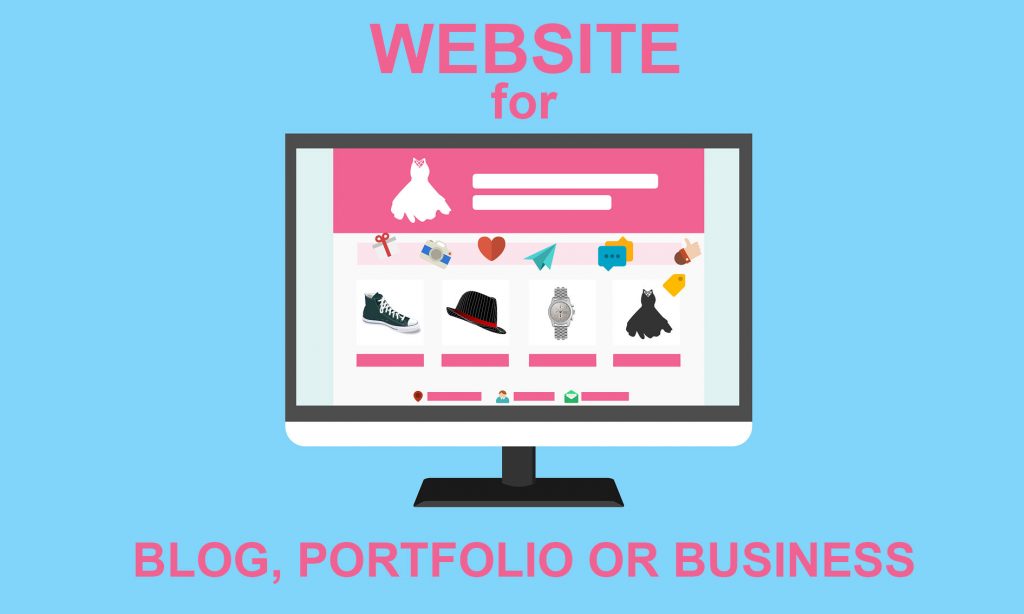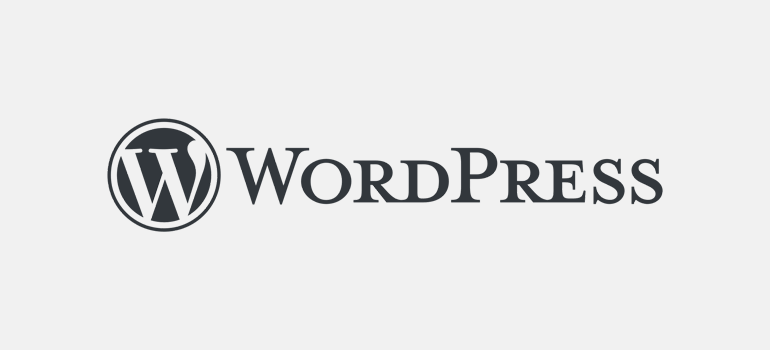To create your own website for blog, portfolio or business has become incredibly easy and cost-effective in today’s digital world. Regardless of whether you decide to use a web builder, collaborate with a talented web designer, or take the DIY approach, this comprehensive guide aims to offer you valuable insights to enhance your online visibility.
Table of Contents
Section 1: Exploring Web design options
When it comes to creating a new website for your need you have mainly three primary factors to consider, each with its own advantages and considerations.
1.1 The Quick and Easy Option: Web Builders
If you’re looking to get online swiftly, web builders are your best bet. They offer easy to use backend platforms that allow you to create a professional website within minutes. With an array of features and top-notch support, popular choices like Wix, Squarespace, and Shopify empower you to design a visually stunning online home for your business. We will discuss more later in this article about how to choose a correct web builder and right hosting for your need please follow along.
1.2 Bespoke Excellence: Working with Web Designers
For those seeking a truly unique and personalised website, collaborating with a web designer is the ideal path. This option is ideal if you want to impress your customers with a one-of-a-kind online experience or if your business demands complex technical requirements. Although it may involve a higher investment, the result is a website that exudes excellence. I will guide you through the process of working with a web designer, from finding the right match to ensuring a fruitful collaboration.
1.3 The DIY Approach: Crafting Your Website with WordPress
For tech-savvy entrepreneurs with a preference for autonomy, WordPress offers a versatile platform for creating your business website from scratch. Armed with your technical skills, you can customize and optimize every aspect to suit your unique vision. In this section, I will provide insights and practical advice to navigate the WordPress building method which will help you to construct a website that perfectly aligns with your business goals.
Section 2: Maximizing Your Web Builder Experience
2.1 Selecting the Ideal Website Builder
Choosing the right web builder is essential to your website’s success. When to decide what type of website builder you want, it depends on user-friendliness, essential features, and reliable support. After conducting extensive testing and research, our top pick for small businesses is Wix, closely followed by Squarespace. Let’s explore the remarkable benefits offered by these two exceptional web builders.
2.2 Creating Your Website Builder Account
Setting up your website builder account is an easy process. Most website builder provides a free trial and you even do not need to provide credit card details until you decide to upgrade to a paid plan. Modern website templates provide the ideal starting point for a cost-effective solution that doesn’t compromise professionalism. We will show you how to leverage the vast template libraries offered by Wix and Squarespace, allowing you to effortlessly customize your chosen design to reflect your brand identity.
2.3 Crafting an Engaging Online Store
If your business ventures into e-commerce, fear not—web builders like Wix, Squarespace, and Shopify offer robust e-commerce functionality. To build an online store that elevates the purchasing experience, Shopify stands as the top choice. Its tailored sales features, seamless product pages, and post-purchase integrations position it as the ultimate e-commerce web builder. I’ll provide you with essential insights and considerations to help you create a compelling online store for your business.
2.4 Publishing Your New Website
It’s time to launch your website after carefully designing and customizing it to promote your business. You’ll need a domain name, and a unique web address that reflects your online presence, in order to make your website visible to visitors.
Many web builders offer a free domain name for the first year, with subsequent years incurring a reasonable fee. Gaining a clear understanding of the domain registration process is crucial, and our in-depth guide on purchasing a domain name will equip you with all the necessary information.
By adhering to the aforementioned steps, you’ll be on the right track to develop a captivating website for your business. Remember, the ultimate goal is to engage your audience, convey your brand message effectively, and facilitate seamless interactions. Your website should reflect the values and personality of your business, enticing visitors to explore further and take the desired actions.
Section 3: Harnessing the Expertise of Web Designers
3.1 Web Design for Unparalleled Impact
For those seeking a website that goes beyond the ordinary, collaborating with a web designer can unlock limitless possibilities. This option is ideal if you want to create a website that truly wows your customers and caters to your unique business requirements. The web design process is akin to working with an architect to construct your dream house. I will guide you through the intricacies of selecting a web designer who possesses industry-specific expertise, a proven track record, and a compatible working style.
3.2 Nurturing a Collaborative Partnership
Effective communication and collaboration are vital when working with a web designer. From the initial stages of defining your website’s objectives to the final implementation, maintaining a shared vision is key. You’ll discover the importance of providing clear guidelines, outlining your preferences, and incorporating your branding elements. We’ll also address crucial aspects such as project timelines, budget considerations, and ongoing maintenance requirements.
3.3 The Web Design Contract
Before starting a web design process, it is crucial to establish a well-defined contract that outlines the scope of work and deliverables. Carefully review the contract to ensure it aligns with your expectations and covers all necessary aspects. A thorough understanding of the contract terms will help you avoid unexpected expenses and ensure a smooth collaboration with your chosen web designer.
By engaging the expertise of a web designer, you can create a website that showcases the uniqueness and excellence of your business. While this route may involve a higher investment, the end result will be a truly special online presence that captivates and converts your target audience.
Website Design Process
During the design and development of your website, you will receive iterations for feedback at various stages. If the design doesn’t align with your vision, it’s important to communicate your concerns rather than attempting endless tweaks that can lead to unnecessary friction.
However, it’s equally important to avoid nitpicking. Making minor adjustments, such as moving elements by a few inches, is unlikely to have a significant impact and may only frustrate your designer.
Collaborating with a web designer can result in a truly spectacular website for your business. However, it’s essential to be actively involved in the lengthy and potentially expensive process.
Ready to Get Started?
If you desire complete freedom to customize your website, have the time and technical knowledge to design and build it yourself, and want to lower costs, using WordPress.org may be the ideal choice. This option requires significant effort on your part but provides the opportunity to create a bespoke site.

Discover the Ultimate Platform for Crafting Your Small Business Website
- Avoiding the critical blunder of choosing the wrong platform for your business website is crucial, especially for beginners like yourself.
- When it comes to website builders, WordPress is the most popular and easy to operate. It was used by over 43% of all websites on the internet, including blogs and many small business websites from across the globe.
- But here’s the thrilling aspect: WordPress goes beyond being a mere blogging platform; it serves as a robust and all-encompassing content management system (CMS).
- The true beauty of WordPress lies in its expansive collection of pre-designed website templates, extensions, and add-ons. With this treasure trove at your disposal, you can create virtually any type of website you can imagine, regardless of your technical prowess.
So, let’s dive into the enchanting world of WordPress and uncover how to effortlessly forge a remarkable small business website on a budget.
WordPress website installation process
Step 1: Essential Components for Your Small Business Website
To construct your small business website, you’ll need the following three vital elements:
- A domain name: This will be the unique name that identifies your website, such as yourdomainname.com.
- A website hosting plan: This is where your website will reside, and where all your files will be securely stored.
- Just 60 minutes of your time.
Step 2: Establishing Your Small Business Website
WordPress offers two distinct options: WordPress.com, a hosted solution, and WordPress.org, commonly referred to as self-hosted WordPress.
For our purposes, we will utilise self-hosted WordPress since it grants immediate access to the full range of WordPress features right from the start.
The next step involves procuring a domain name and securing WordPress hosting to establish your website. We highly recommend Hostinger as your go-to provider. They are one of the industry’s leading hosting companies and an officially endorsed WordPress hosting provider.
A personalized domain name would normally cost $14.99 per year, while website hosting options begin at $7.99 per month. If you’re a beginner, here’s some good news: most hosting companies will give you a free domain name and a SSL certificate if you purchase a hosting package. In essence, you may begin your adventure for as low as $2.75 per month.
→ Take Advantage of This Exclusive Hostinger Offer Now ←
Let’s proceed and procure a domain name and hosting.
Step 3: Selecting a Domain Name for Your Small Business Website
Begin by opening the Hostinger website in a new browser window and clicking on the inviting green ‘Get Started Now’ button. Initiating your journey with Hostinger. On the subsequent page, you’ll encounter a selection of pricing plans. The Single and Premium plans stand out as the most favoured choices among small business owners.
Choose your desired plan
Click the ‘Add to Cart’ button corresponding to your chosen plan to proceed to the next stage.
Now, let’s select a domain name for your website.
Picking the ideal domain name
Helpful Tips for Finding the Perfect Domain Name for Your Business Website:
Remember, your domain name significantly impacts your website’s success. While it’s important to dedicate some time to selecting the ideal domain name for your business, avoid overthinking it. Stick with the .com extension since it’s easier for users to remember. Ensure that your domain name is relevant to your business (For instance, stargardening.com).
If your preferred domain name is unavailable, consider adding a geographical location to it. This boosts your domain’s visibility in local search results (e.g., stargardeninghouston.com).
Keep it simple, concise, and easy to pronounce.

Step 4: Installing WordPress
- Once you finalise domain names you will be asked for our account details. if you do not have any you can signup.
- Beneath that, you’ll come across supplementary hosting options that you can consider purchasing. However, we suggest postponing the acquisition of these additional features for the time being. You can always add them later if the need arises.
- Skip the hosting add-ons for now.
- Following that, you’ll need to furnish your payment information to finalize the purchase.
- Upon completion of your purchase, you’ll receive an email containing instructions on how to access your web hosting control panel.
- Hostinger will automatically install WordPress for you, granting you direct access to your WordPress site from the hosting dashboard.
- Hostinger hosting dashboard
- Upon logging in, you’ll find yourself in the WordPress admin area. This is your hub for managing your website, adjusting settings, and adding fresh content.
- WordPress dashboard
Step 5: Crafting Your Small Business Website’s Content Layout
- Now that WordPress is up and running, it’s time to outline the content for your website. Remarkable small business websites often follow a simple and standard layout.
- To create a new page in WordPress, simply navigate to Pages » Add New.
- Adding a new page in WordPress
- For now, don’t worry about the actual content, text, or images. A basic title, a few lines of text, and a couple of images will suffice. You can always revisit these pages later to refine and expand them.
Here are some essential web pages commonly found in small business website layouts:
Homepage: This serves as the welcoming gateway to your website. Include your business name and a compelling call to action, directing visitors to your services/products or contact page. Provide a brief description of why customers should choose your business.
About Us: Visitors want to know more about the individuals behind the business before making a decision. Create an engaging “About Us” page to introduce yourself, highlight your business values, and showcase relevant industry experience.
Services/Products: Design a page dedicated to detailing the services or products you offer. Provide a clear heading for each offering and a concise description. You may also include pricing information or encourage users to reach out for a quote.
Contact Us: This page is crucial for users to get in touch with you. Incorporate a contact form to facilitate direct communication. Additionally, consider including your business address or phone number. If you’re in need of a business phone service, we recommend Nextiva for our online business needs.
Feel free to create additional pages as needed. For instance, you can dedicate a separate page to your blog, individual pages for each service or product, an FAQ page, a customer support page, and more.
Step 6: Selecting a Website Design
- After WordPress is installed there will be a few default themes already listed. However, if you’re not fond of the default theme, fear not! There are thousands of free and premium WordPress themes available for your perusal.
- We recommend opting for a clean and visually appealing web design that encompasses all the necessary elements.
- Typically, a business website includes a navigation menu at the top, followed by a homepage featuring a welcoming message and a compelling call to action button. This is then followed by additional content.
- Once you have chosen a theme, you can proceed to install it. For detailed instructions, refer to our beginner’s guide on how to install a WordPress theme.
- Each WordPress theme comes with various customization options to modify its appearance. Many of these options can be found under Appearance » Customise in the WordPress admin area.
Customise your website design in WordPress
- From here, you can add navigation menus, change colours, add or remove different sections, add widgets and more. If you are satisfied with the changes you can click “Publish” button to save your changes.
- If you are unable to find a theme that fits your specific needs, you can consider using one of the popular drag-and-drop page builders for WordPress to create a customized design. Some recommended options include SeedProd, Beaver Builder, Elementor or the Divi theme.
Step 7: Enhancing Your Website with WordPress Plugins
WordPress plugins are like apps for your WordPress site, allowing you to add new features and functionality such as contact forms, Google Analytics integration, testimonials, social media feeds, and more.
With over 60,000 free plugins available in the WordPress plugin directory alone, you are likely to find a plugin for almost any feature you desire.
For example, you can utilize an eCommerce plugin like WooCommerce to transform your website into an online store.
Here are a few essential plugins that we recommend installing on every website:
- Plugin for Security
- Plugin for Fast Loading
- Plugin for SEO
- Plugin for Backups
- Plugin for E-Commerce
Finally, we have completed step by step guide on how to create a website for a small business on a budget using WordPress platform.
Remember to regularly update your website with fresh content, maintain good security practices, and leverage the power of WordPress plugins to enhance its features and functionality.
In conclusion
when creating a business website, you have three primary choices: using a website builder, hiring a web designer, or utilizing WordPress.org. Website builders offer a quick and affordable solution suitable for most small businesses. Hiring a web designer allows for a customised site but can be more time-consuming and expensive. WordPress.org offers creative control and cost savings but requires DIY effort. To determine the best option for your needs, take our quick website quiz to receive personalized recommendations.
Best of luck on your website-building journey!

